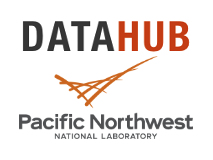Journal Article
Atmospheric Chemistry and Physics, vol. 18, iss. 8, pp. 5529-5547, 2018
Authors
Longtao Wu, Yu Gu, Jonathan H. Jiang, Hui Su, Nanpeng Yu, Chun Zhao, Yun Qian, Bin Zhao, Kuo-Nan Liou, Yong-Sang Choi
Abstract
Abstract. A version of the WRF-Chem model with fully coupled
aerosol–meteorology–snowpack is employed to investigate the impacts of
various aerosol sources on precipitation and snowpack in California. In
particular, the impacts of locally emitted anthropogenic and dust aerosols,
and aerosols transported from outside California are studied. We
differentiate three pathways of aerosol effects: aerosol–radiation
interaction (ARI), aerosol–snow interaction (ASI), and aerosol–cloud
interaction (ACI). The convection-permitting model simulations show that
precipitation, snow water equivalent (SWE), and surface air temperature
averaged over the whole domain (34–42∘ N, 117–124∘ W, not
including ocean points) are reduced when aerosols are included, therefore
reducing large biases in these variables due to the absence of aerosol
effects in the model. Aerosols affect California water resources through the
warming of mountaintops and the reduction of precipitation; however,
different aerosol sources play different roles in changing surface
temperature, precipitation, and snowpack in California by means of various
weights of the three pathways. ARI by all aerosols mainly cools the surface,
leading to slightly increased SWE over the mountains. Locally emitted dust
aerosols warm the surface of mountaintops through ASI, in which the reduced
snow albedo associated with dusty snow leads to more surface absorption of
solar radiation and reduced SWE. Transported aerosols and local anthropogenic
aerosols play a dominant role in increasing nonprecipitating clouds but
reducing precipitation through ACI, leading to reduced SWE and runoff on
the Sierra Nevada, as well as the warming of mountaintops associated with
decreased SWE and hence lower surface albedo. The average changes in surface
temperature from October 2012 to June 2013 are about −0.19 and 0.22 K for
the whole domain and over mountaintops, respectively. Overall, the averaged
reduction during October to June is about 7 % for precipitation, 3 %
for SWE, and 7 % for surface runoff for the whole domain, while the
corresponding numbers are 12, 10, and 10 % for the mountaintops. The
reduction in SWE is more significant in a dry year, with 9 % for the
whole domain and 16 % for the mountaintops. The maximum reduction of
∼ 20 % in precipitation occurs in May and is associated with the maximum
aerosol loading, leading to the largest decrease in SWE and surface
runoff over that period. It is also found that dust aerosols can cause
early snowmelt on the mountaintops and reduced surface runoff after April.
